One of Australia’s leading authorities on fermentation, Sharon Flynn is the owner of The Fermentary, supplying top restaurants and independent grocers across Australia with high-quality fermented food and drinks – a business she started after having experienced the benefits of these foods first-hand when her youngest daughter was ill. Out of this venture came two books on fermenting at home, geared towards curious beginners and more experienced fermenters alike. Here, we chat with Sharon about why everyone should incorporate living food into our everyday diets, and how to start fermenting in our very own kitchens.
AMEX Essentials: Your first book, Ferment for Good, mentions ‘ancient food for the modern gut’ in its subtitle. Why are fermented foods so beneficial to our modern-day digestive systems?
Sharon Flynn: We don’t have many ways to get living food, full of bacteria – the good stuff that our bodies need – into our bodies anymore. Many of us don’t have lifestyles that would introduce bacteria any other way either. In fact, we use a lot of products to kill bacteria – not just since COVID-19 – things like Listerine or bench sprays, for example.
Over the last couple of hundred years, we have simultaneously added ways to kill bacteria on a larger scale as well – in our water, in our food systems, the medicine that we take, and feed the soil and animals we farm to eat. Pasteurisation happened around the same time as the large-scale industrialisation of our food system, which also brought about larger-scale agriculture and monoculture, meaning the need for more pesticides and less biodiversity, and at the same time we introduced antibiotics, to both ourselves and the animals we farmed, which also goes into our water.
Thinking about all of that can seem very big and overwhelming. A simple way to push back against this, and also get your own gut back in order, is to eat the wild and living vegetables you ferment in your own kitchen. It’s not a miracle for everyone, of course, but to some people, it can be as simple as introducing milk kefir into their everyday diet that makes all the difference. Plus, you’ll be part of a gentle revolution against the homogenisation of our food.
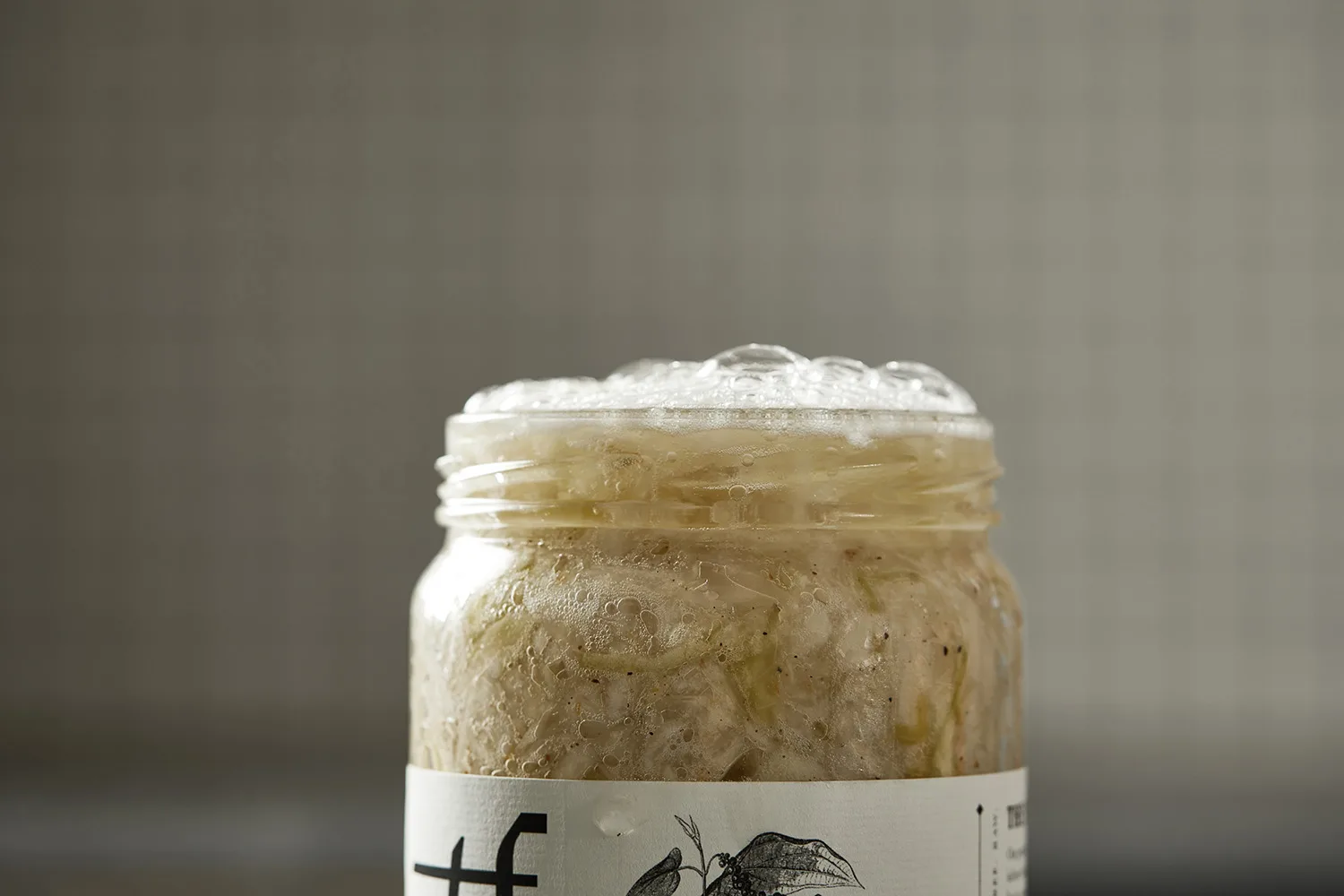
Many fermented foods are readily available at speciality markets. Why, in your opinion, should people start fermenting their own drinks and foods at home?
Since we industrialised and commercialised food and drink, it has come down to profit and the bottom line. And when it comes to fermentation, sometimes the most expensive ingredient is time. To make it more affordable – in every ferment from sauerkraut to soy sauce – we have imitated real flavour with substitutes.
A real pickle, for example, juicy and full of life in its traditional preparation, is made with a brine (salt, water, herbs and garlic, for instance). The naturally occurring bacteria on and in the vegetable eat the sugars in the pickle to produce lactic acid – the sour that you taste. To skip that step, manufacturers just imitate that end result by adding vinegar and heat, making them shelf-stable. This is by far more reliable than making them with a brine and leaving them alive. Living foods like this also need to be stored cool, and this costs more to ship and store.
If you can find some fresh vegetables and preserve them when they are in abundance, you will not only add life to them, in the way of billions of tiny microbes that’ll go on to feed your microbiome, but also you’ll also be part of a bit of a revolution, and a part of you might connect to your own history as a maker. Putting your hand into something, like a long-term project such as miso or sauerkraut, is also a very magical and awakening thing. That there is no vinegar in sauerkraut can come as a shock to many people: imagine the joy in working symbiotically with the invisible, both preserving our food for later and making it more digestible as well as more delicious?
Many fermented foods are pasteurised so the life that you might be hoping for is often no longer there. When we heat living foods like this, the bacteria are killed. The kombucha industry has been hit by the alcohol content, as well as the batch variance. Commercially made kombucha couldn’t possibly be as wild and good as the one you’d make at home: instead, they have to use the smallest amount of ‘kombucha product’, force-carbonate it, and then also add non-fermentable sugars so that the alcohol and fizz don’t grow in the bottle.
Kombucha is a perfect example of what happens to many foods and drinks once they are made on a larger commercial scale. Find a small maker or make your own.
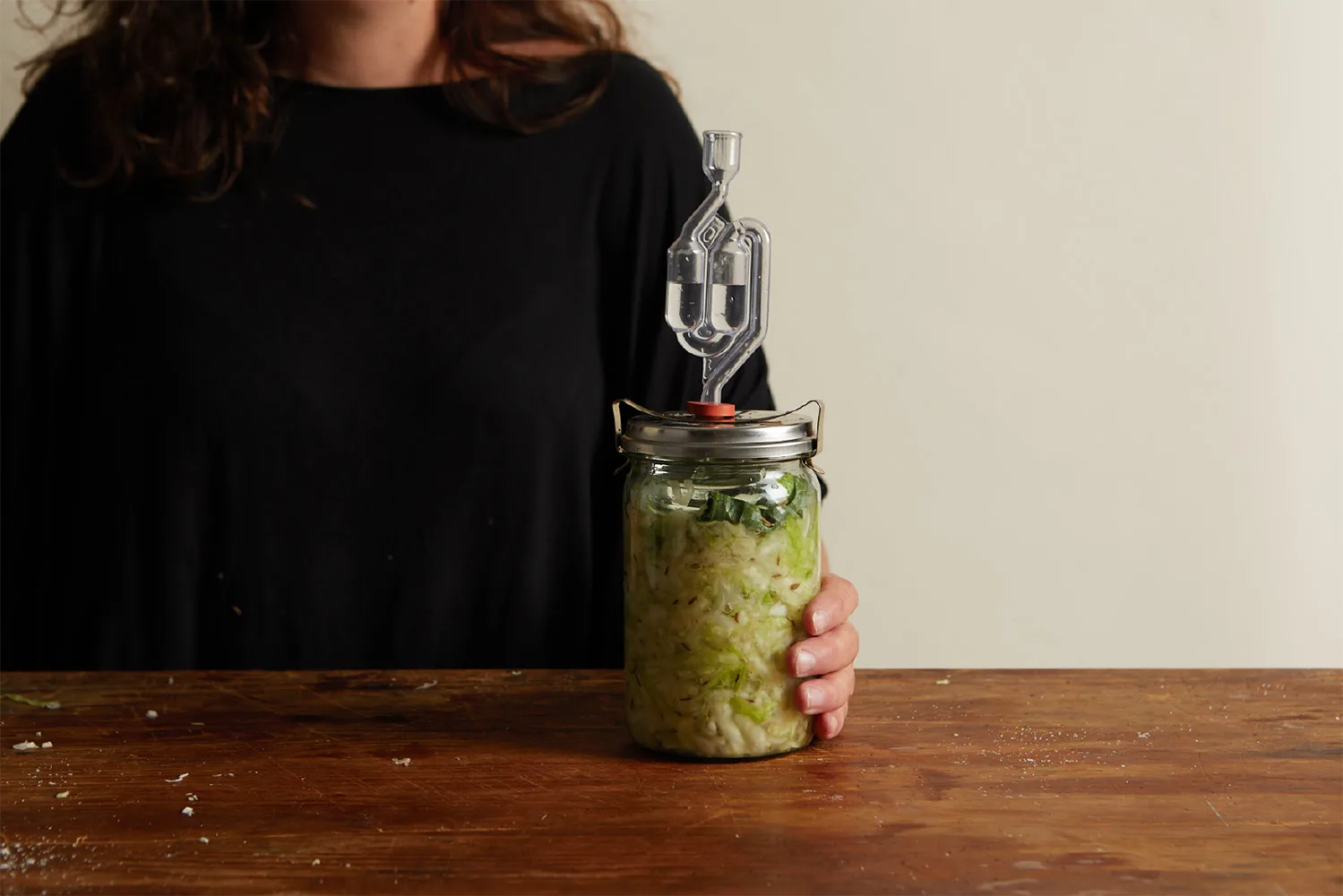
What is some of the quintessential equipment you’d need to start fermenting foods?
I think the best thing about home fermenting is that it is something we’ve been doing at home since we had kitchens. Maybe even before. So you don’t need anything in particular to begin.
Depending on what you’re making, a nice big jar is a good start. If you’re making drinks, then collecting good, thick glass bottles with resealable lids is ideal, too. You don’t need anything fancy – depending on what you’re making, it could be just a need to keep all air away and a way to let the gases that are formed in the jar out. You might just ‘burp’ the jar, i.e. quickly opening and closing a regular jar. Later you might get a little crock with a mote or an airlock lid system.
A home fermenter can begin any wild ferment, really. I think a simple brined vegetable is easiest, but for drinks, mead made from simple honey and water is a great place to start. As is rye kvass: burnt bread, some sugars and a bit of fruit. It makes a delicious drink that sits somewhere between apple cider vinegar and a wheat beer.
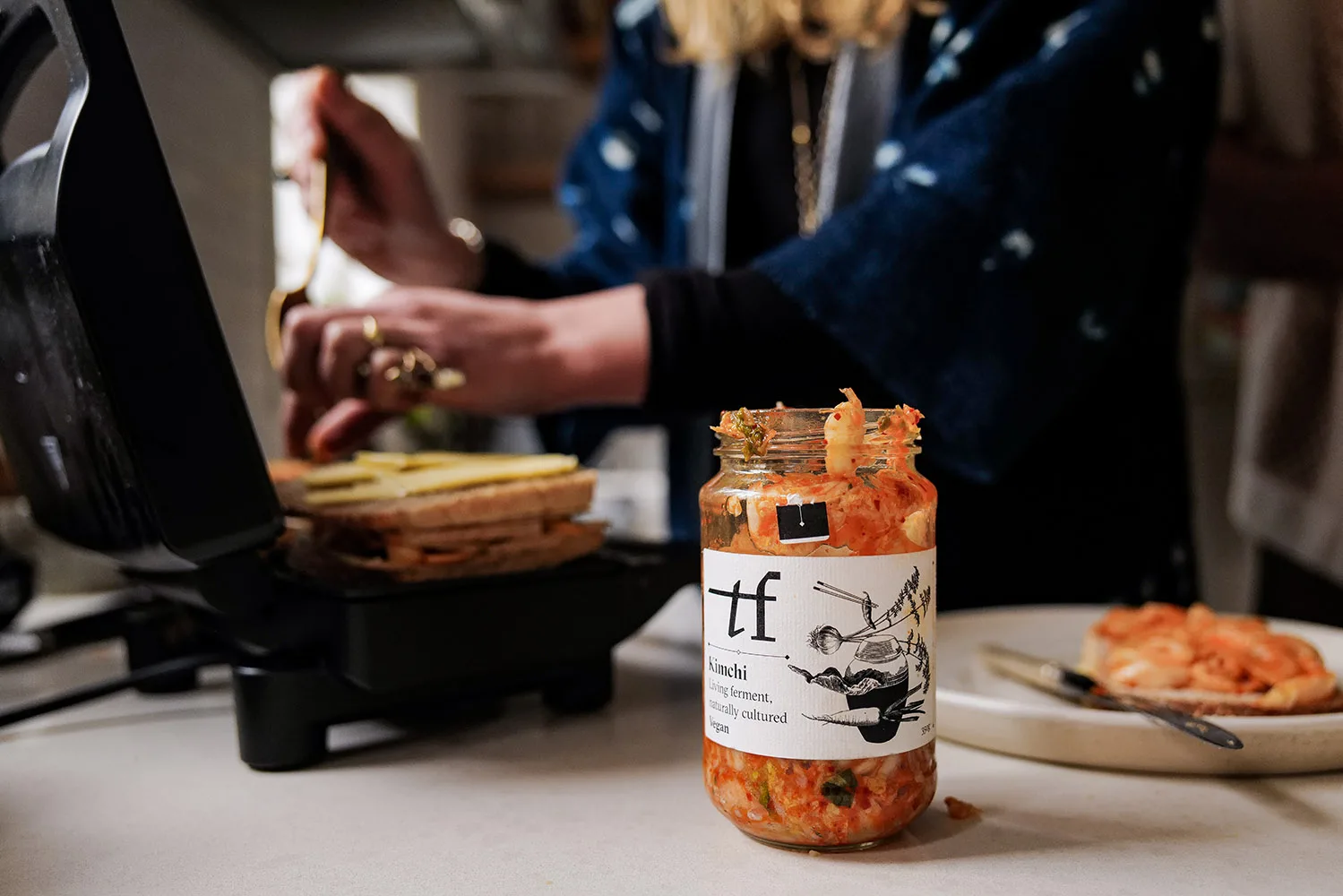
In Ferment for Good, you call fermented food the slowest and oldest fast food. Why ‘fast food’?
Once something is fermented, it is ready to eat with very little preparation needed. Think of a pickle. Or sauerkraut, for example. Grab and eat: no other cooking or preparation necessary.
Another great thing is that often the preparation time it takes to put something up to ferment is very fast. For sauerkraut, we chop the cabbage, salt and massage it for a few minutes until it’s dripping with its own juices, and then pack it into the jar. Ten minutes perhaps. All we need to do is wait and make sure the environment is right. The microbes do all the work. And I tend to think they are lucky that we have created that environment for them. It’s a symbiotic relationship that we’ve been nurturing for thousands of years.
In your second book, Wild Drinks, you focus on infusions, brews and ferments. What are some of your favourite drink recipes in the book?
After Ferment for Good was out for a couple of years, and I’d been feeding thousands of people our krauts and kimchis, I realised that some sour foods can be more challenging for some palates. People need to relearn how to add these living foods into their everyday diets. I might convince someone to buy a jar, but it might stay in their fridge, sitting at the back and then they become scared of it… is it too old to eat now?
Drinks however, particularly fizzy and colourful ones, are much easier to get into people. They are generally a faster ferment, and many of them can be made from things most people have in their homes already, like stale bread and honey. Or they’d have whey by straining yoghurt; my favourite drink to make that I know everyone will love is a whey soda. You can flavour that with any fruit you have on hand. You can make it medicinal if you have a herb that you know will be good for you. It can be as light or rich as you like.
Then of course, if I want to show off, making kvass or sake is a favourite. People can’t believe the flavours you can get from these kitchen staples.
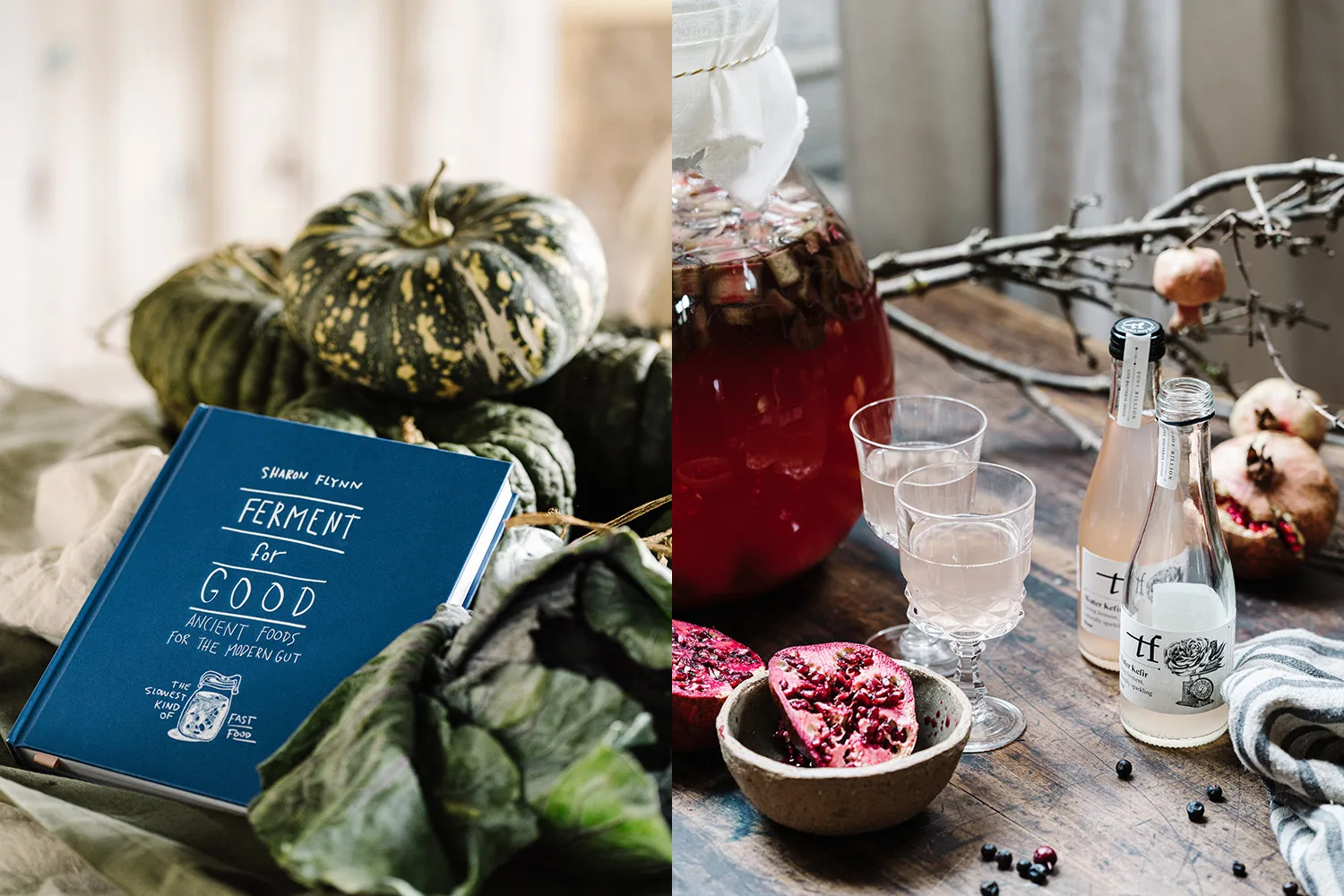
The taste of some fermented foods might take some getting used to when you’re not familiar with them. Do you have a tip on how to let your palate get accustomed to these foods that are good for your gut?
Think about some of our most celebrated older food cultures, and notice that whenever there is a fat, there is an acid. Meat platter? Pickles. Tempura? Pickles. So when you are eating a fat or an oil (not just meat and oils, think even avocado, cheese or egg yolk!), you should try to add an acid, preferably a living one like sauerkraut or a brined pickle, or even a wild soda or milk kefir. This helps aid in digestion, makes what you’re eating more bioavailable (and therefore more nutritious), and also feeds your microbiome.
A good way to get these beautiful foods into your body is by putting the jars of them on the table at each meal. Think not of ‘taking’ some as a medicine, try and eat a small amount of a wide range of fermented food regularly. It won’t work for you unless you find some that you like and know that you’ll enjoy a tablespoon of here and there. Usually, once you get into the habit of enjoying a sour food, you’ll start to crave it.
Check out Ferment for Good and Wild Drinks by Sharon Flynn, who you can also follow on Instagram.

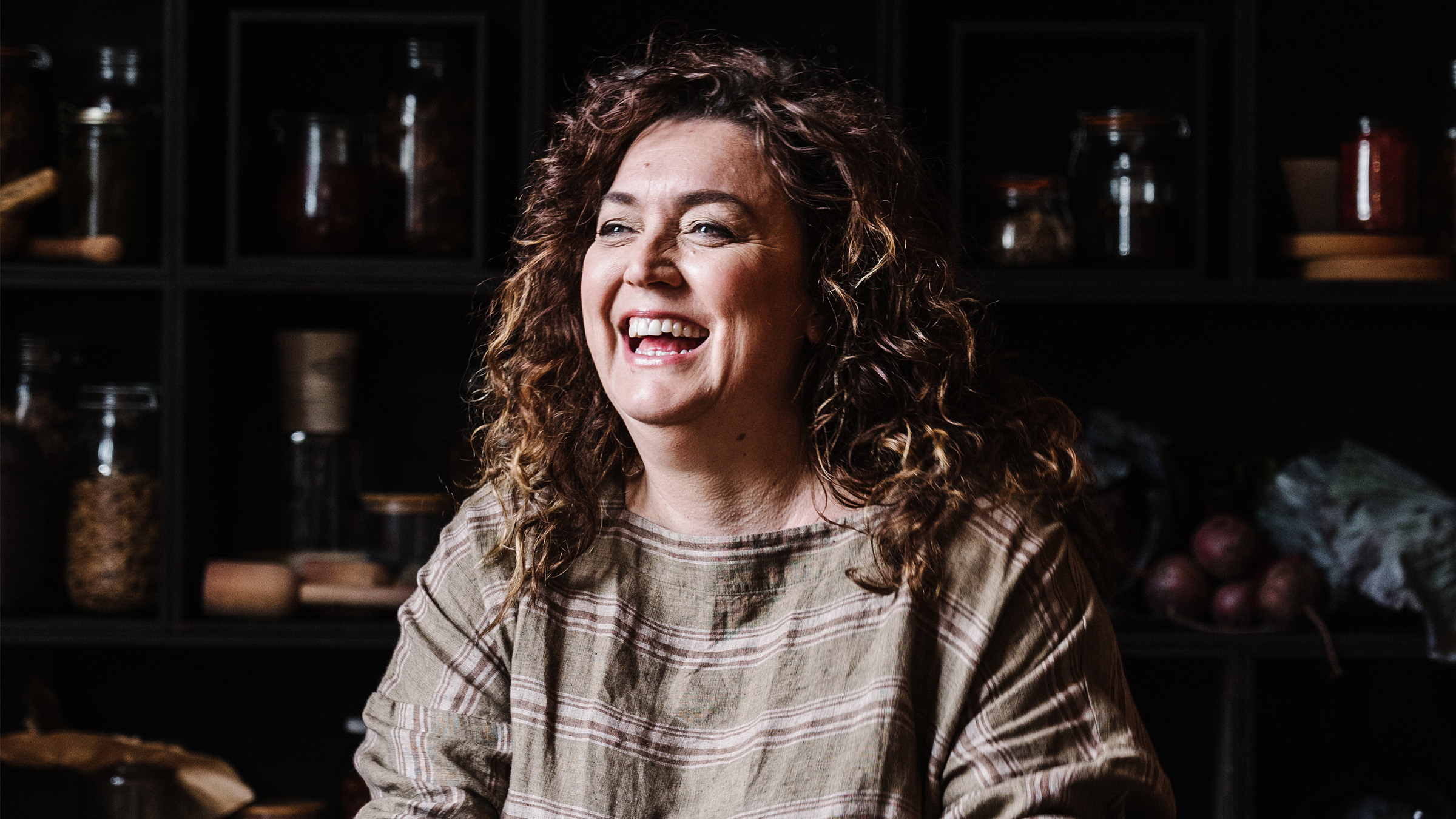












Sorry, the comment form is closed at this time.